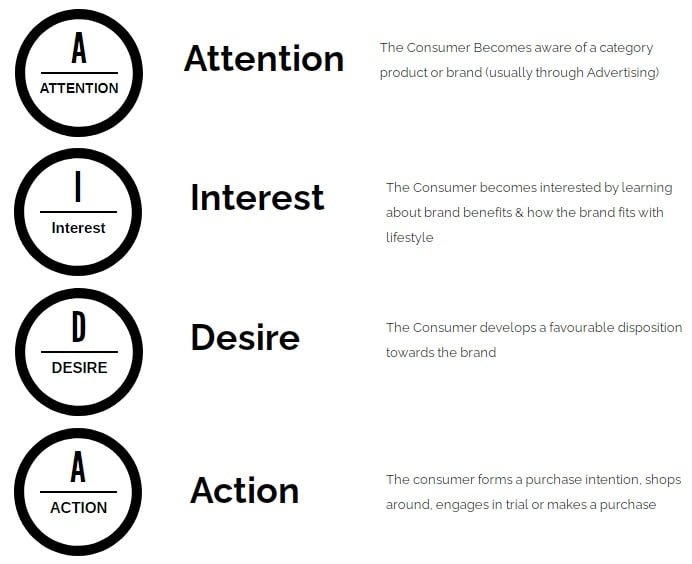The AIDAS theory of selling is one of the most widely known and the basis for training materials in many organizations. AIDAS implies Attention, Interests, Desire, Action, and Satisfaction The AIDAS theory of selling just states that five different stages of the prospective customer to go through and finally respond to our product satisfactorily. Thus, all five stages should be conducted efficiently.
1) Attention
Gaining attention is a skill, which can be developed in practice, just like any other skill. The phrase “First impression is the last impression” is applicable here. The salesperson’s initial attempt should be to make the customer completely happy. Casual discussion is one of the best openers for the seller to gain customer attention by bringing it to the sale. The aim here is to put the prospect in the right frame of mind to continue sales talk. In order to participate in the face-to-face interview, the seller needs to convince the prospective customer.A good start to a discussion can provide the stage for a full sales presentation. In order to make the prospective customers aware of their sales presentation a seller must apply his social and psychological skills.
2) Interest Creating
The second step is to increase the attention of the prospects to have a strong interest. The seller must be passionate about the product in order to do this. Another approach is to give the product over and allow the prospect to handle it. The same intent applies to brochures and other visual aids. Throughout the stages of interest, the hope is to explore the most efficient selling appeal. Some people are very good at the opening, but the techniques take over when they explain the product, they become uncomfortable. Others with strong product awareness could open up without hesitation but create interest in the second stage. Interest is an integral part of the sales process and therefore is part of the AIDAS theory. This is the second step in AIDAS Theory of Selling.
3) Desire
After attention is paid and awareness is generated, a strong desire for the product must be evoked. This is a point ready for purchase. At this point, complaints from the future will have to be dealt with carefully. You save time and improve the chances of a sale if complaints were expected and addressed before the prospect raised. The seller in personal sales must do the same. In the mind of the consumer, he must generate enough desire to buy the product immediately. Think of a salesperson selling a tool or a mop. Sales Person explain the benefits of the product and made you think, “Why I have not purchased it before?” In this way, this impulse becomes an integral part of the philosophy of AIDAS sales. This is the third step in AIDAS Theory of Selling.
4) Action
The potential customer is ready to act, i.e. to buy, if the presentation has been perfect. Very often the prospect at this stage may have some hesitation. The salesman should handle this stage very carefully and try to conclude the deal effectively. The seller then has to reassure the client, once the buyer has asked the seller to pack the product, that the decision is correct. The customer may not act, although the product might be desired. Maybe he would like to purchase the product, but he would not. The customer must be inducted in such situations. The customer may be inducted in different ways to buy the commodity. For the salesperson, it is important to understand whether the customer is to be specifically influenced or whether subtle reminders are to be placed on a sales call. Both methods work, however, the customer needs to be known. This is the fourth step in AIDAS Theory of Selling.
5) Satisfaction
Satisfaction is 5th step in AIDAS Theory of Selling. The customer should feel that the seller has merely helped him in making the right decision. The salesperson will ensure that the product is delivered to the consumer after the sales are made. The salesman can feel the opportunity and brings back his talks. Customers always expect good service and good products. Thus, you must reassure your customer that he took the right decision even after he purchased the product. The product is useful for the customer. He’s right, and that’s his decision. Since the customer is king and we have to satisfy them in his queries and provide good after-sales services. Good Products and services have a great impact on long-lasting customer relations.